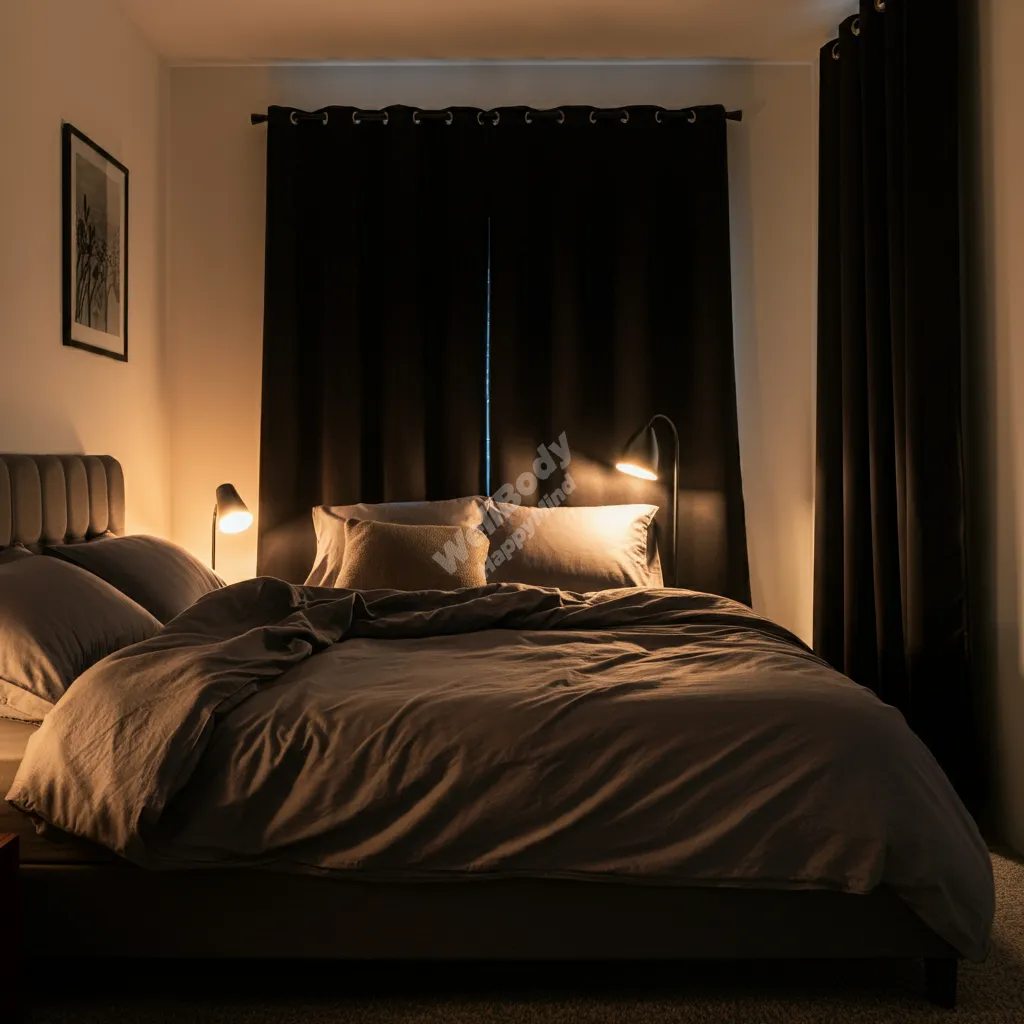The Role of Sleep Hygiene in the Era of Always-On Connectivity

Did you know that we spend about 33 years of our lives in bed? Yet, many of us struggle to get the quality sleep we need. In our fast-paced, always-connected world, good sleep can feel like a luxury. But with the right sleep hygiene practices, you can transform your nights and energize your days.
The Sleep Crisis in the Digital Age
Picture this: It’s 11 PM, and you’re in bed, scrolling through your phone “one last time.” Before you know it, it’s past midnight, and you’re still wide awake. Sound familiar? You’re not alone.
A recent study found that 90% of Americans use some type of electronic device in the hour before bed. This constant connectivity is taking a toll on our sleep and our health.
What is Sleep Hygiene?
Sleep hygiene isn’t about cleaning your bedroom (though that’s important too!). It’s about the habits and practices that help you get a good night’s sleep. Think of it as a set of rules for your bedtime routine.
Good sleep hygiene can make the difference between:
- Tossing and turning all night
- Waking up refreshed and ready for the day
Why Sleep Matters
Sleep isn’t just downtime for your body. It’s an active period of renewal. During sleep, your body:
- Consolidates memories
- Repairs tissues
- Boosts your immune system
- Regulates hormones
Skimping on sleep can lead to many problems. You might have trouble focusing or face a higher risk of chronic diseases. That’s why good sleep hygiene is crucial, especially in our tech-driven world.
The Tech-Sleep Tug-of-War
Our devices are designed to keep us engaged, often at the cost of our sleep. The blue light from screens can confuse our brains. It makes us think it’s still daytime, messing up our natural sleep-wake cycle. Plus, the constant stream of notifications keeps our minds active when they should be winding down.
But don’t worry! In this article, we’ll explore how to balance technology with restful sleep. We’ll cover:
- Practical strategies for digital detox
- Creating a sleep-friendly environment
- Using technology to support your sleep health
Are you ready to transform your nights and energize your days? Let’s start this journey to better sleep together!

The Always-On Connectivity Phenomenon
In today’s digital age, we’re more connected than ever before. “Always-on connectivity” refers to the constant state of being linked to digital devices and the internet. It’s like having a 24/7 open line to the world’s information and social connections.
The Numbers Don’t Lie
Let’s look at some eye-opening statistics about our device usage before bedtime:
- 71% of Americans sleep with their smartphone within arm’s reach
- 3 in 4 people check their phones within 15 minutes of waking up
- The average person spends 3 hours and 15 minutes on their phone daily
- 50% of people say they feel uneasy when they don’t have their phone with them
These numbers show just how intertwined our lives have become with our devices. But what does this mean for our sleep?
Impact on Our Body Clocks
Our bodies have a natural circadian rhythm – an internal clock that regulates our sleep-wake cycle. This rhythm is influenced by external cues, especially light. The constant presence of screens in our lives can throw this delicate balance off track.
How Technology Disrupts Sleep
Technology affects our sleep in several ways. Let’s break it down:
Blue Light Exposure
Blue light is a type of light emitted by digital screens. It can interfere with our body’s production of melatonin, the hormone that helps us sleep.
Common sources of blue light include:
- Smartphones
- Tablets
- Computers
- LED TVs
- E-readers
Using these devices before bed can trick our brains into thinking it’s still daytime, making it harder to fall asleep.

Cognitive Stimulation
When we use our devices, we’re not just exposing ourselves to light – we’re also keeping our minds active. Whether we’re answering work emails, scrolling through social media, or playing games, these activities stimulate our brains.
This leads to a phenomenon known as “revenge bedtime procrastination”. It’s when people put off sleep to reclaim some personal time, often through digital activities. While it might feel good in the moment, it can lead to a cycle of sleep deprivation.
Notifications and Alerts
The constant pings and buzzes from our devices can disrupt our sleep even when we’re not actively using them. Each notification triggers a small release of dopamine in our brains, making it hard to resist checking our phones.
This ties into the psychological impact of FOMO (Fear of Missing Out). We worry about missing important messages or updates, which can keep us in a state of alertness when we should be winding down.
By understanding how technology affects our sleep, we can take steps to create better sleep hygiene practices. In the next section, we’ll explore practical strategies for improving your sleep in our always-connected world.
Remember, the goal isn’t to completely eliminate technology from our lives. Instead, we want to find a balance that allows us to enjoy the benefits of connectivity without sacrificing our precious sleep.
Implementing Effective Sleep Hygiene Practices
Now that we understand how technology affects our sleep, let’s explore some practical sleep hygiene practices to improve our rest.
Creating a Sleep-Friendly Environment
Your bedroom should be a sanctuary for sleep. Here are some tips to optimize your sleep environment:
- Keep your room dark: Use blackout curtains or an eye mask to block out light.
- Maintain a cool temperature: Aim for 60-67°F (15-19°C) in your bedroom.
- Reduce noise: Use earplugs or a white noise machine if needed.
- Invest in a comfortable mattress and pillows.
- Use calming scents like lavender to promote relaxation.
Remember, consistency is key. Try to go to bed and wake up at the same time every day, even on weekends. This helps regulate your body’s internal clock.

Digital Detox Strategies
Implementing a digital detox before bed can significantly improve your sleep quality. Here are some strategies:
- Establish a “digital curfew”: Set a time (ideally 1-2 hours before bed) when you stop using electronic devices.
- Create tech-free zones: Keep devices out of the bedroom to reduce temptation.
- Use night mode: If you must use devices, enable night mode or install blue light filtering apps.
Here’s a table of helpful apps to reduce blue light exposure:
| App Name | Features | Available On |
|---|---|---|
| f.lux | Adjusts screen color based on time of day | Windows, Mac, Linux |
| Night Shift | Built-in feature that reduces blue light | iOS devices |
| Twilight | Filters blue light and brightness | Android devices |
Mindfulness and Relaxation Techniques
Incorporating relaxation methods into your bedtime routine can help prepare your mind and body for sleep. Try these techniques:
- Deep breathing exercises
- Progressive muscle relaxation
- Guided imagery
- Meditation or mindfulness practices
Consider establishing pre-sleep rituals that don’t involve technology, such as reading a physical book, journaling, or light stretching.

Balancing Connectivity and Sleep Health
Finding a balance between staying connected and maintaining good sleep health is crucial in our digital age.
Setting Boundaries with Technology
Here are some tips for creating healthy tech boundaries:
- Designate tech-free times: Set specific hours when you disconnect from devices.
- Use “Do Not Disturb” mode: Silence notifications during sleep hours.
- Communicate your goals: Let friends and family know about your sleep hygiene efforts.
- Find alternative activities: Replace screen time with hobbies or face-to-face interactions.
Leveraging Technology for Better Sleep
While technology can disrupt sleep, it can also be used to support good sleep habits:
- Sleep-tracking apps and devices: These can provide insights into your sleep patterns and quality.
- Smart home devices: Use them to control lighting and temperature for optimal sleep conditions.
- Meditation and relaxation apps: These can guide you through calming exercises before bed.
Remember, the key is to use technology intentionally to support your sleep hygiene practices, rather than letting it control your sleep schedule.
By implementing these strategies, you can create a better balance between staying connected and getting the restorative sleep you need. In our final section, we’ll explore the benefits of improved sleep hygiene and wrap up with some actionable steps you can take tonight.
The Benefits of Improved Sleep Hygiene
Implementing good sleep hygiene practices can have a profound impact on your overall health and well-being. Let’s explore some of the key benefits:
- Enhanced Mental Clarity: Good sleep improves concentration, problem-solving skills, and decision-making abilities.
- Improved Mood: Adequate sleep helps regulate emotions, reducing the risk of anxiety and depression.
- Boosted Immune System: Quality sleep strengthens your body’s defenses against illness.
- Better Physical Performance: Sleep aids in muscle recovery and improves athletic performance.
- Weight Management: Proper sleep helps regulate hormones that control appetite and metabolism.
- Reduced Risk of Chronic Diseases: Regular, quality sleep is linked to lower risks of heart disease, diabetes, and certain cancers.
- Increased Productivity: Well-rested individuals tend to be more efficient and creative in their work.
Research backs up these benefits. For instance:
- A study published in the journal Sleep found that people who got 7-8 hours of sleep per night had a 22% lower risk of heart disease compared to those who slept less.
- According to the National Sleep Foundation, adults who sleep fewer than 7 hours per night are more likely to report being obese, physically inactive, and current smokers.

Conclusion
In our always-connected world, maintaining good sleep hygiene is more important than ever. By understanding the impact of technology on our sleep and implementing effective strategies, we can harness the benefits of connectivity without sacrificing our rest.
Remember, good sleep hygiene isn’t about perfection. It’s about creating habits that work for you and your lifestyle. Small changes, like setting a digital curfew or creating a relaxing bedtime routine, can make a big difference in your sleep quality and overall well-being.
As we’ve learned, the benefits of improved sleep extend far beyond just feeling more rested. From enhanced mental clarity to better physical health, quality sleep is a cornerstone of a healthy, happy life.
Call to Action
Now that you’re armed with knowledge about sleep hygiene practices and the importance of balancing technology use, it’s time to take action:
- Start tonight: Choose one sleep hygiene tip from this article and implement it tonight. It could be as simple as setting a digital curfew or trying a relaxation technique before bed.
- Track your progress: Keep a sleep diary for a week. Note your bedtime, wake time, and how you feel each day. This can help you identify patterns and areas for improvement.
- Share your experience: We’d love to hear about your sleep hygiene journey! Leave a comment below sharing your favorite tip or the biggest challenge you face in improving your sleep.
- Stay informed: Subscribe to our blog for more wellness content, including updates on the latest sleep health research and tips.
- Spread the word: Share this article with friends and family who might benefit from better sleep hygiene. Together, we can create a more well-rested, healthier community.
Remember, your journey to better sleep is unique to you. Be patient with yourself as you implement these changes, and celebrate the small victories along the way. Here’s to better nights and brighter days ahead!



